Varicose veins are a systemic disease that can affect blood vessels throughout the body. Its essence is in the dysfunction of the valves that control the direction of blood flow. Therefore, excessive fluid accumulates in the arteries, under the influence of which the walls stretch and lose their elasticity.
Clinical presentation
Impaired venous blood flow develops due to damage, overloading and deformation of the caps of perforated (connecting) vessels. When the function of the deep (internal) arteries is disrupted, the blood circulation becomes chaotic, which causes it to enter the superficial vessels and form characteristic nodules. Such defects are clearly visible to the naked eye or on palpation of the lesion site.
Varicose veins are progressive pathologies that are fraught with serious health complications and disability without timely treatment. Wounds, ulcers and blood clots can form in varicose veins that develop at the site of vascular injury.
What does
do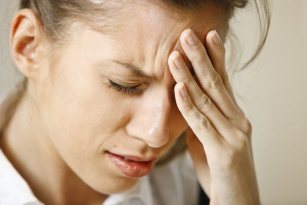
Various factors cause venous dilatation. They can be conventionally divided into large and small. The main sources of varicose veins are:
- Regular strenuous physical activity;
- Staying in a static position for a long time - sitting or standing;
- Unfavorable environmental conditions - for example, constant high temperatures;
- Weight change or chronic obesity;
- Hormonal balance - during pregnancy or menopause;
- Endocrine system diseases;
- Hereditary and genetic predisposition to the structural features of blood vessels, ie congenital low venous valves and weakness of the connective tissue of the arterial walls;
- Neuroses.
In the anamnesis, the development of varicose veins, as a rule, stimulates not one, but several factors.
Tips for everyday life
For example, if you are constantly sitting because of work, you can put a bench under your feet. This way you will significantly reduce the tension in your legs.
It is advisable to avoid high heels. Wearing such shoes will significantly limit the contraction of calf muscles and at the same time prevent the spread of joints. As a result, the blood will simply stagnate.
Sudden changes in temperature can greatly affect the filling of blood vessels. For example, when the temperature rises, the arteries fill with blood, which increases the load on the valves. Reduce the number of hot baths, sunbathe on the beach, etc. Remember, the temperature drop should be gradual.
Cycling, swimming and, of course, daily brisk walking are very useful. Remember to prefer shallow water or sand when walking and avoid hard roads as much as possible. A two-minute darkening of the conflicting legs will help you easily get rid of the feeling of heaviness and numbness. Moreover, this doating can be done with the help of a shower.
Remember that when you cross your legs, it impedes blood flow and narrows the arteries.
Keep your feet at heart level while resting. You can also raise one side of your bed a little so that your feet are a little higher than usual.
Symptoms of the disease
Varicose veins can have different manifestations, depending on the severity of the pathology and the physiological characteristics of the patient's body. According to the stages of varicose veins, the following symptoms of vascular disease are noted:
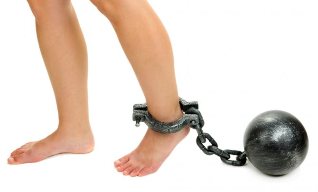
- Venous patterns or "stars" on the skin (telangiectasia);
- Swelling of the limbs, especially at the end of the day;
- Pain in the legs or along the veins when examining them;
- Recurrent seizures;
- Rapid fatigue, especially when walking;
- Visual manifestation of blood vessels on the surface of the skin;
- Feeling of heaviness in the legs;
- Burning in venous lesions;
- Muscle itching;
- aches and pains of different nature;
- Wrapping of blood vessels in the legs and feet;
- Dermatological changes in the skin - dryness, pigmentation, darkening;
- Development of dermatitis, eczema and trophic disorders in the form of incurable wounds and ulcers;
- Squeezing of the skin at the sites of varicose veins;
- Hematoma formation.
Symptoms may begin in adolescence. After a while, the disease develops without being felt, with unpleasant consequences for health. If you have at least one of the above symptoms, you should be examined immediately. A phlebologist or surgeon treats a patient's veins.
Classification
Pathological enlargement of the vessels of the lower extremities is generally classified according to a special classification CEAP or Clinical Etiological Anatomy Pathology, according to the decision of the international scientific community. According to this typology, varicose veins have 6 clinical stages:
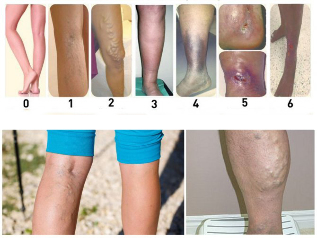
- Zero. The patient has minor subjective complaints regarding some of the symptoms of varicose veins, but there are still no obvious signs of the disease with visual examination and medical examination.
- I degree. On the surface of the skin appear small vascular networks, rare edema, heaviness, burning, a feeling of "buzzing" in the legs.
- Class II. It is considered the starting point of true varicose veins. An external manifestation of dilated vessels is characterized by the formation of aggravated venous nodules after prolonged stay in a static position or walking on high heels. Starting from this stage, a thrombus is likely to form.
- III degree. The symptoms of the second group are accompanied by regular swelling, most noticeable at the end of the day, and in calves there is a sharp pain, pulling.
- IV degree. There are trophic changes in the skin. Due to the accumulation of excessive pigment in the epidermis, the skin begins to change color from dark brown to black. It is also possible to develop small local inflammations in the form of erythema or wet sores, which over time lead to dermal atrophy and ulcers.
- V class. It has the same course as the fifth stage, but with an improved trophic ulcer.
- Class VI. It is characterized by severe progression with the formation of non-healing wounds and ulcers.
Varicose veins are a serious disease. Without timely treatment and continuous prevention, it progresses rapidly and leads to irreversible consequences and terrible consequences, up to death. Only 10 years from the diagnosis of varicose veins is enough to move the pathology from stage I to stage VI.
Stages
The first signs of varicose veins in the legs appear in the progressive stages when the venous valves perform less than 50% of their functions. In the first or zero stage of varicose veins, known as the "compensation phase", there are no unpleasant sensations and no visible changes. Detection of the initial stage of varicose veins in the legs occurs by a phlebologist examining the limbs closely.
Changes in the second stage of varicose veins, known as "subcompensation", are very well expressed:
- Large veins appear under the skin, but may not protrude above the skin surface;
- On the surface of the skin below the thighs and knees, a thin varicose mesh pattern made of blue or red capillaries is clearly visible;
- swollen feet in the evening;
- Calf muscles cramp at night.
This stage of varicose veins of the lower extremities is characterized by increasing symptoms that weaken after rest.
In the final stage of varicose veins, decompensation occurs: the body is unable to meet the oxygen demand of the tissue, and the function of the valves in the veins is reduced by 90%. The condition of the limbs worsens due to anemia. This stage of varicose veins is characterized by a decrease in the ability of tissues to regenerate. The abundance of complications worsens the general condition of the patient. Symptoms in the final stages of varicose veins persist.
Pathological in men
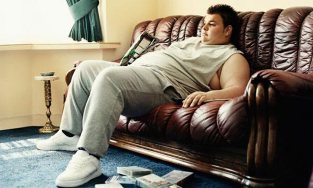
There is no gender of vascular pathology. However, according to the pathogenesis, the disease is conventionally divided into male and female varicose veins, each of which has its own characteristics of formation and development. Thus, the characteristics of male physiology do not contribute to the development of vascular problems in the stronger half of humanity, but there are a number of factors that contribute to this. Among them:
- Heavy physical work or professional sports related to carrying or lifting loads;
- sedentary lifestyle;
- Poor nutrition;
- Genetic predisposition;
- Long-term use of hormonal drugs;
- Bad habits.
Varicose veins develop more in men after the age of 40 and are accompanied by increased skin fatigue, leg pain, visible edema, venous pattern on the skin surface, frequent cramps and itchy skin such as allergic dermatitis. In some advanced cases, blood clots and vascular infections are possible. And if at first the disease does not appear, over time, its manifestations become clear. However, the main changes take place inside the arteries, weakening their walls to such an extent that exposure to a toxic substance or infection can cause any damage, even small ones. Treatment of varicose veins in men is the same as in women and has no specific features.
Pathological in women
The beautiful half of the population suffers from varicose veins several times more than men. Favorable factors for this are:
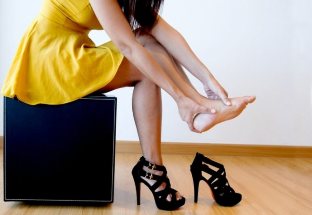
- Wear high-heeled shoes or shoes that do not fit the size and fullness of the feet;
- Extremely tight clothing that loses weight or impedes blood circulation;
- Work that requires you to be on your feet all day - salesman, receptionist, hairdresser, teacher, cook, etc. ;
- Hormonal changes associated with pregnancy, childbirth and age-related changes in the body (menopause);
- Experiments with weight loss - frequent fluctuations in body weight, excessive diets aimed at dramatic weight loss, uncontrolled extra pounds.
Women who are often sick of phlebologists and cosmetologists. To maintain the aesthetic appearance of the skin for as long as possible, women are more responsible than men in the treatment of varicose veins and achieve visible improvements in the clinical condition of the arterial system.
Given the natural tendency to varicose veins, swelling of the legs, extreme fatigue of the legs, itching and burning sensations, the appearance of small veins and venous pattern should be a serious warning to a woman and a reason to see a doctor immediately.
Treatment of varicose veins with folk remedies
We should not panic when examining the presented disease, because varicose veins are practically treated with proper and timely treatment.
Why in practice? This is because after the elimination of certain actions, including preventive methods, the disease can reappear and does not cause less problems than before.
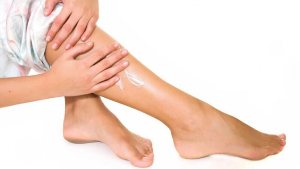
How to treat varicose veinsquickly and painlessly? You need to resort to traditional medicine.
Infusions and tinctures
First of all, the disease must be treated internally. To do this, you need to prepare infusions or tinctures using natural products, herbs and other substances that will improve blood circulation. Some can be treated here:
- Stinging nettle. Pre-dry the lawn and grind it as desired. To prepare the infusion, pour 2 tablespoons of herbs in a glass of boiling water. The contents are stored for an hour and filtered. Then drink a glass at least 3 times a day. The course of treatment lasts six months with an interval of one month.
- Horse Chestnut. Crushed horse chestnut kernels are cut in half in a three-liter jar and poured into the edges of the jar with vodka or alcohol. For a month, the jar is kept in a dark place, periodically shaking the contents. Over time, you can start rubbing your feet with the resulting tincture. Perform such procedures 2-3 times a week without interruption.
Treatment of varicose veins at home with folk remedies involves the use of any medicinal plant that will improve blood circulation in the human body.
Apples for varicose veins
Apples have an excellent healing effect. Here you can use the fruit in its pure form and as an additive to other products.
How to get rid of varicose veins with an apple:
- Prepare apple infusion. To do this, keep the apples in 1 liter of warm water for 4 hours. Then pass the fruit through a meat grinder or sieve, mix with immersed water. Squeeze water from the mixture and take 50 g twice a day.
- Apple cider vinegar for varicose veinscan be used by rubbing or inside. For treatment, it is enough to rub a small amount of vinegar on problem areas overnight. You can also use vinegar diluted with a little honey by drinking a glass half an hour before a meal.
Be careful when using internally diluted vinegar. This method is contraindicated for people with gastrointestinal diseases.
Treatment of varicose veins at home, video:
Diagnostics
Special research methods are used to accurately diagnose varicose veins and determine their severity. The standard examination scheme when contacting a phlebologist is as follows:
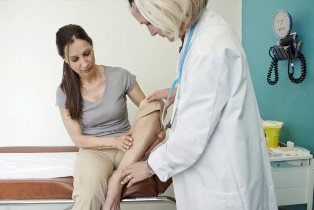
- Collection of medical history identifying possible risk factors and causes;
- Visual examination of the patient and palpation of venous lesions, changing the final position;
- Laboratory blood test;
- Ultrasound color duplex sonography of the vessels of the lower extremities, which allows to conduct a medical examination, to measure the speed and direction of blood flow, to compile a movement map, to obtain a characteristic and clear image of the vessels;
- Vascular radiography (phlebography) using a contrast agent to determine the appearance and shape of the vessels, the functionality of the valves and the direction of blood flow.
Often, these research methods are sufficient to determine the exact clinic, but in some cases, additional diagnostic methods are used:
- 3D CT with phlebography (computed tomography);
- Photoplethysmography using infrared and light radiation from a photoresistor or phototransistor;
- Phleboscintigraphy based on the use of radionuclide isotopes and phlebomanometry, a dynamic study of venous pressure in the lower extremities;
- Lymphoscintigraphy showing the condition and degree of change in the lymph nodes.
The need for a specific diagnostic method is determined by the physician based on the complexity of the condition and the individual clinical parameters of the patient.
Timely and well-chosen research method allows to determine the condition of superficial and deep vessels and to create an accurate scheme of the therapeutic course in accordance with the indicators.
Conservative treatment
In the early stages, varicose veins are reversed and completely eliminated with a responsible approach to treatment. In other cases, they resort to conservative therapy using drugs, intravenous correctors and special compression underwear to combat varicose veins. Each of these types of treatment has its own indicators for the characteristics of the prescribed and the effect on the patient's body.
- Drug treatment. It involves the oral use of certain phlebotropic drugs - phlebotonics, anticoagulants and antioxidants - that help strengthen blood vessels and reduce fragility, improve blood thinning and normalize blood flow, and remove accumulated toxins from the body. Tonic, analgesic, sedative and anti-inflammatory gels and ointments are used for local treatment. In addition, B, A, K and other group vitamins are included in the therapeutic complex. The decision on the duration of treatment is made based on the results of the diagnosis and the characteristics of the dynamics of the disease.
- Arterial sclerotherapy. The method involves the use of special drugs that affect the type of vascular adhesions affected by varicose veins from the inside. As a result, the reflux is stabilized and carried out through healthy vessels. The procedure is administered intravenously with an invasive solution. It is prescribed for certain conditions of blood vessels and small venous nodules.
- Ozone treatment. It is part of the cosmetology drug and exposes the inner cavity of the vessel to cold ozone to seal the defect area. The method is also actively used to remove non-aesthetic vascular networks from the skin surface. It is effective in the early stages of the disease. Just a few procedures are enough to get the desired result.
- Compression therapy. It consists of wearing special medical underwear that creates pressure of different intensity in different parts of the legs, which helps to reduce the load on the arteries and restore blood circulation. Regular use of corrective underwear protects blood vessels from stretching and the development of thrombosis. Depending on the purpose, compression underwear can be prophylactic (minimum compressive strength), medical (worn only in the exacerbation of venous diseases) and hospital (used in a hospital in the postoperative period). Tights, socks, knee pads and elastic bandages are available. The choice of compression underwear is made only on the advice of a doctor
Surgical techniques to affect dilated vessels
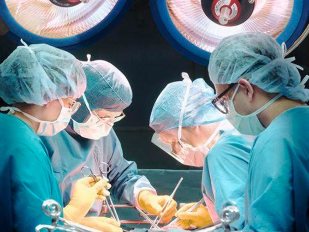
Surgery for varicose veins is only a last resort, when a deep vascular lesion is diagnosed, it is aggravated by the accompanying complications. Indications for surgical intervention:
- Significant aggravation of pathology;
- Development of thrombophlebitis;
- Visible dilation of saphenous vessels;
- Severe swelling and fatigue of the lower extremities;
- Pathological reflux disorder.
The operation is performed under general anesthesia using modern surgical methods:
- Radiofrequency obliteration of blood vessels. To restore the structure of the vessels from the inside using disposable catheters and automatic generators of radio waves.
- Endovenous Thermal Vapor Pulse Blockage (SVS). The effect of a large flow of heated steam on the vessels. Allows to penetrate the most inaccessible areas of the venous bed and directly affect the deformed vessels.
- Laser coagulation of blood vessels. The patient involves the use of a laser beam aimed at a vein. The procedure does not leave cuts, burns and scars.
- Venaseal Technique. It consists of gluing the valves of the vessels with a special biological glue.
- Varadi method. The most difficult method of treatment, which involves the removal of the affected vessel. Due to its 100% effectiveness, neurosurgery is one of the priority methods.
Despite the high effectiveness of surgical treatment, it often occurs in combination with conservative therapy. This approach allows you to accelerate the healing process and reliably combine the results.
Self-massage of legs from varicose veins
- First you need to massage your thighs. In addition, lift from the knee area to the groin area with a light stroke and kneading. Extend the knee joint with your fingertips using a spiral, straight, and circular motion. Press your fist into the popliteal cavity several times and knead this area in a circular motion.
- Lie on your back, relax your muscles and bend your knees. Hold your thighs with your hands and rub the skin with strokes. Shake your leg muscles.
- Stretch each finger with light strokes. Rub the ankle and both feet from bottom to top. Massage your feet and heels in a circular motion and rub your ankles with a little force.
Repeat all this self-massage complex 2-3 times.
Rehabilitation period
In the fight against varicose veins of the lower extremities during recovery and in the future, a competent rehabilitation program, including periodic medication, also helps to maintain a healthy lifestyle and therapeutic exercises.
In addition to physical training in the sanatorium, it is useful for a patient diagnosed with varicose veins to wear corrective medical clothing to improve blood circulation and prevent vascular stagnation, regardless of the stage of development and rehabilitation period.
Nutrition for varicose veins of the lower extremities
Diet is very important in this disease. The following foods should be included in the diet:
- bell pepper;
- carrots;
- white cabbage;
- citrus;
- apple;
- nuts;
- hips;
- currant;
- sea fish;
- egg;
- lean meat;
- legumes;
- cereals;
- cheeses;
- liver.
Diet for varicose veins of the lower extremities includes the rejection of such products:
- canned food;
- semi-finished products;
- buns and pastries;
- caffeinated beverages;
- smoked meats;
- salty foods;
- mixed meat;
- chicory;
- alcoholic beverages.
Prevention
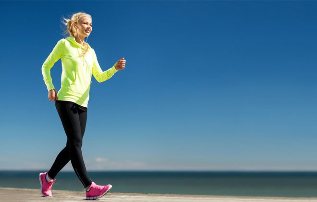
To prevent the development of varicose veins of the lower extremities, you need to monitor your health from an early age. Prevention of the disease is more effective than treatment of the legs when complications develop.
To have good blood circulation, you need to provide enough physical activity. If a person at work stays in the same position for a long time, you need to warm up a bit regularly. You need to take a responsible approach to the choice of shoes - with a small heel (not higher than 6 cm), be comfortable, do not squeeze your feet.
Weight should be controlled. Being overweight is one of the predisposing factors for the development of the disease. In addition, it increases the stress on the arteries. Clothes should be made of natural fabrics. The use of very tight underwear should be avoided to avoid constriction of large veins in the groin area.
It is recommended to use a shower that allows you to change the pressure and temperature of the water during hygiene procedures. With the help of these tricks, you can tone blood vessels and activate blood flow.
It is recommended to exercise or train daily. You don’t have to run several miles at once; It is enough to walk, walk or ride a bike to enjoy.
Before using hormonal contraceptives, you should consult not only a gynecologist, but also a phlebologist, and get tested for hormones. If you change the level of female hormones in the blood, it can adversely affect the condition of the vascular walls.













































